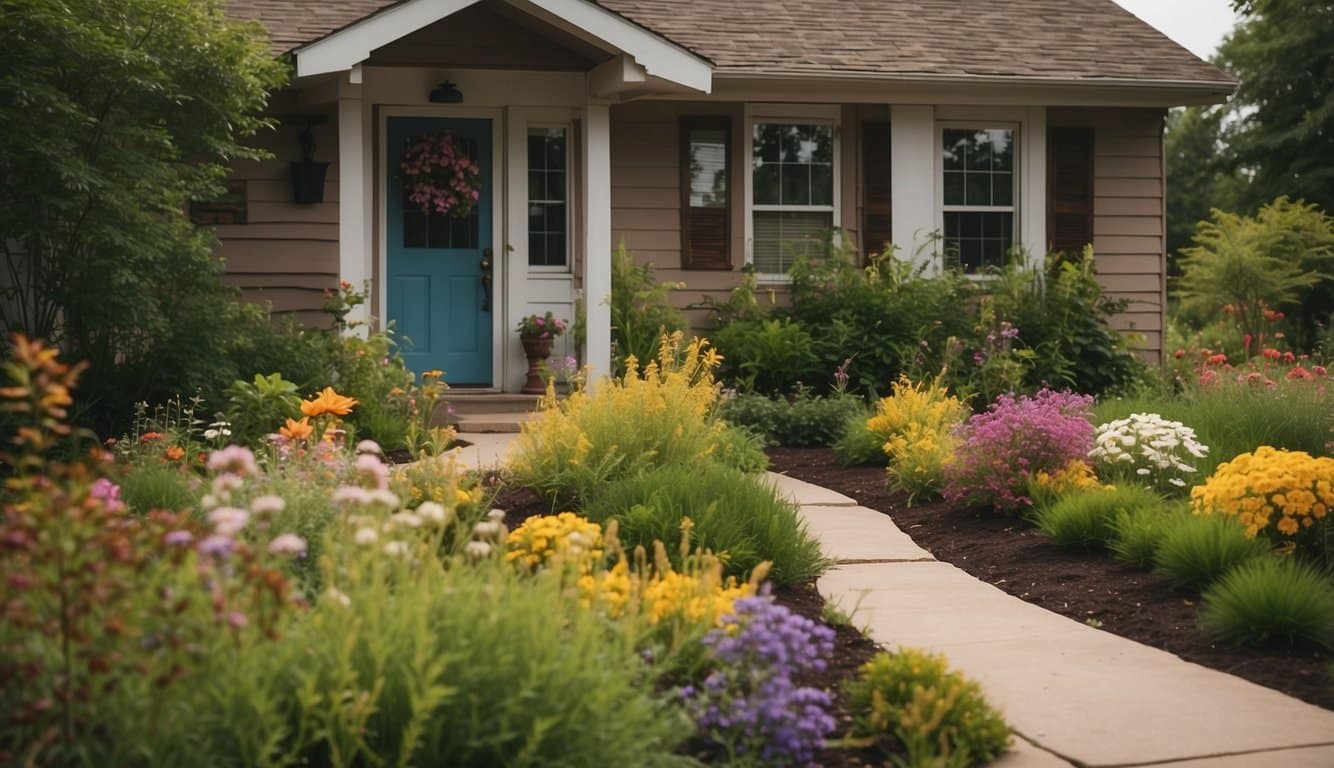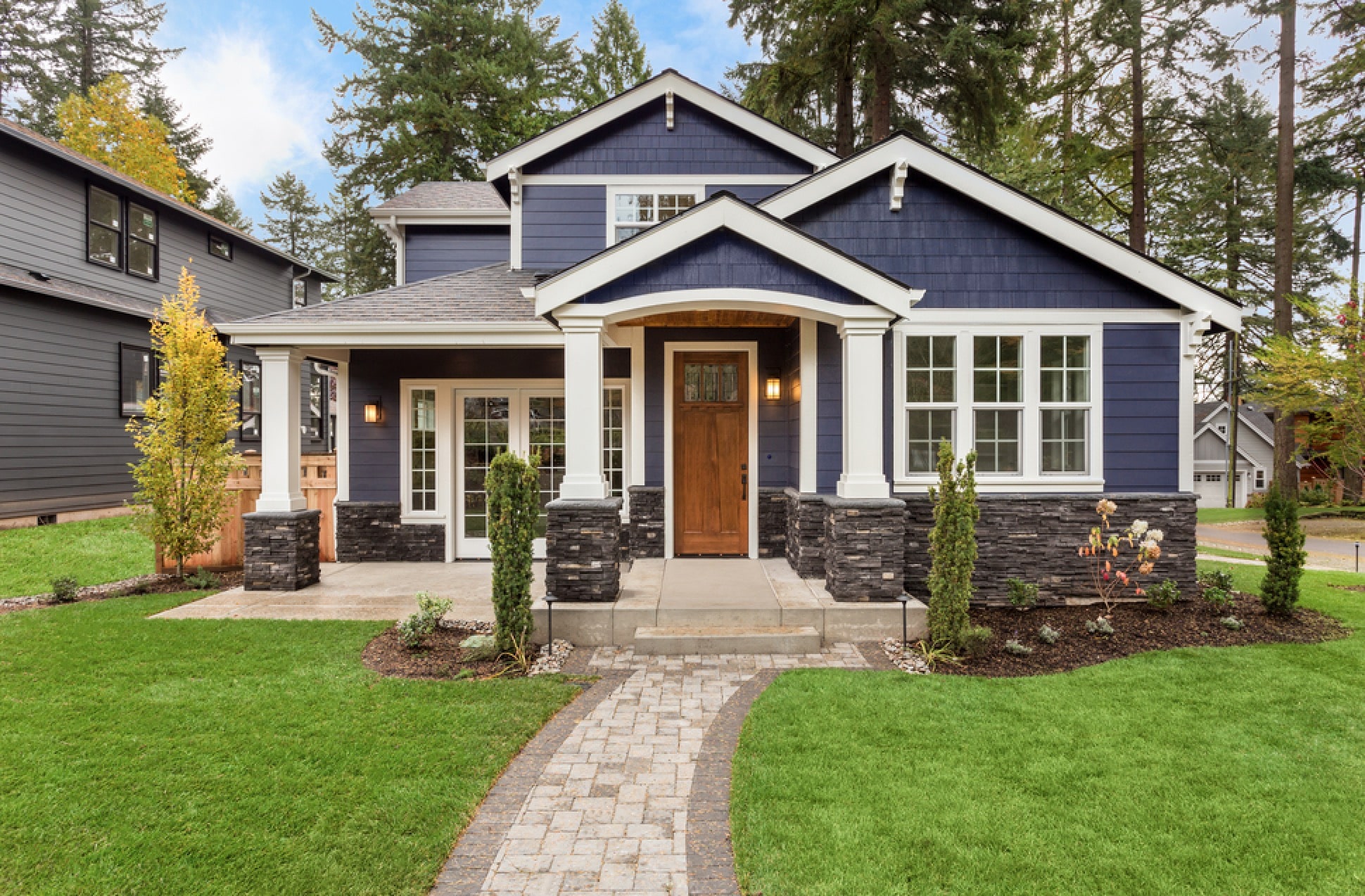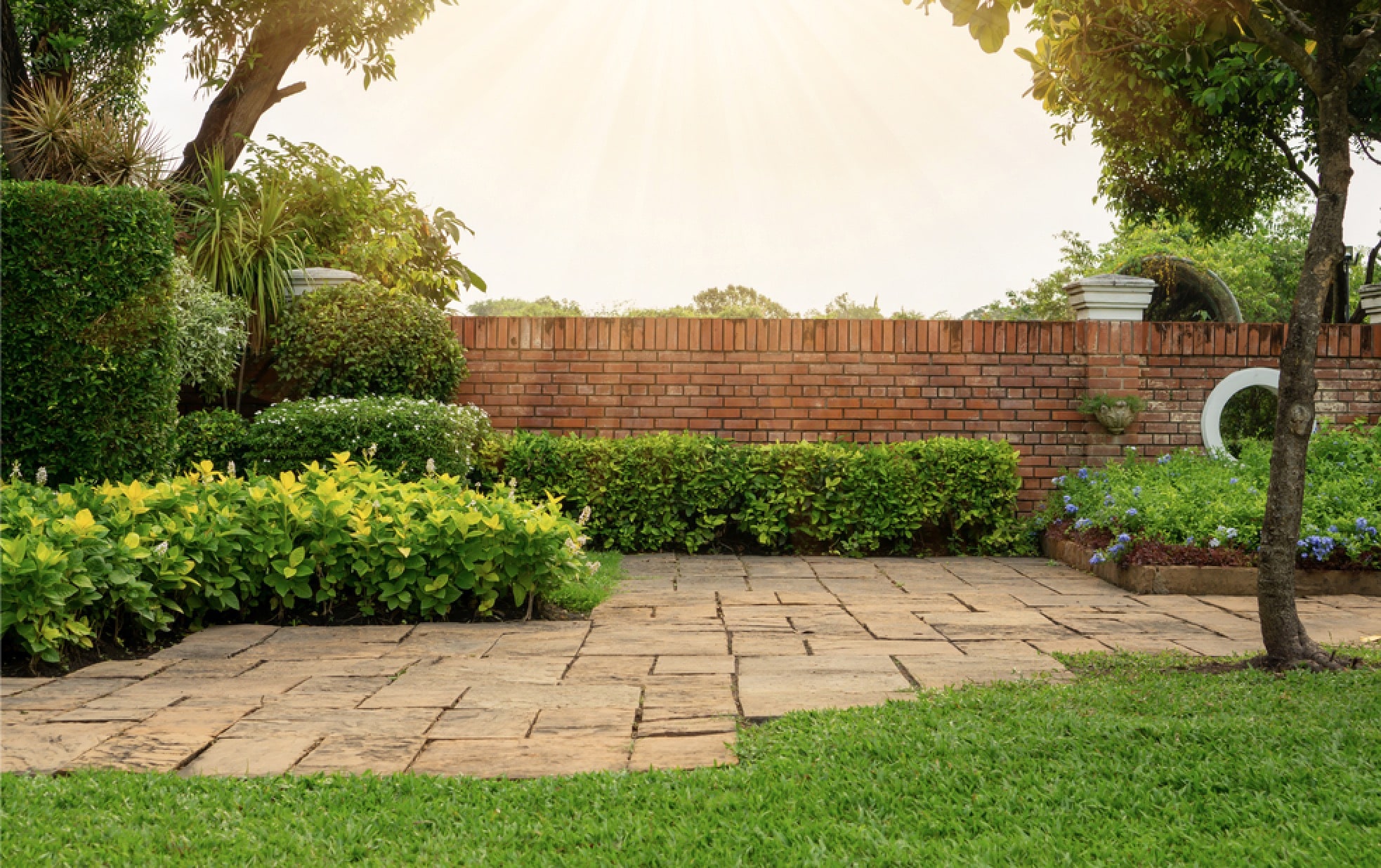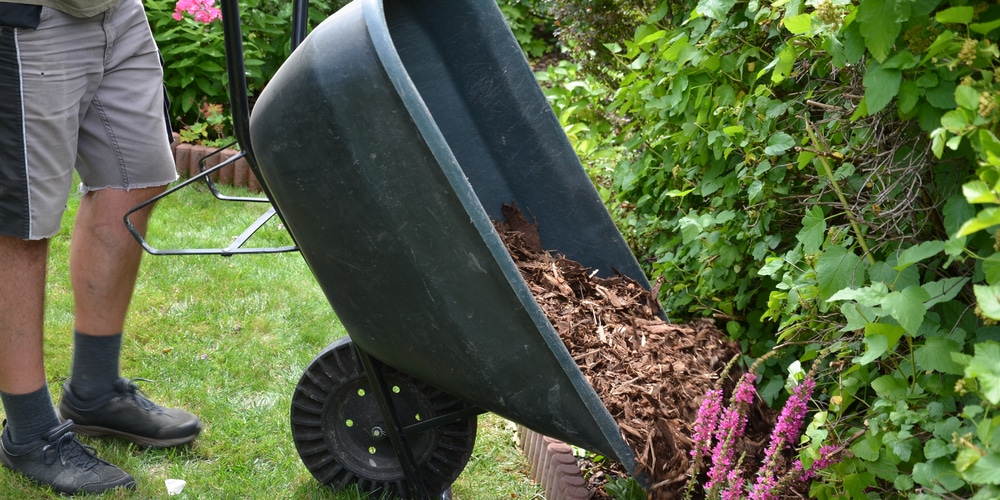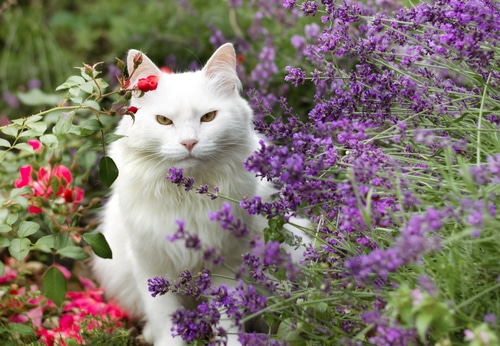Understanding Illinois Climate for Landscaping
To maximize your front yard’s potential in Illinois, it’s essential to understand the region’s climate—a key factor in plant survival and landscape success.
Hardiness Zones and Plant Selection
In Illinois, hardiness zones are primarily classified as Zone 5 and Zone 6. These zones guide you in selecting plants that are most likely to thrive in your landscape:
- Zone 5: Expect colder winter temperatures. Your plant selection should include species that can endure temperatures down to -20°F.
- Zone 6: You can opt for plants with a bit less cold hardiness, as low temperatures here typically bottom out at -10°F.
Seasonal Weather Patterns
Your landscaping should account for Illinois’s distinct seasonal weather patterns, which are characterized by:
- Spring: A mix of rain and moderate temperatures—ideal for planting to ensure a well-established landscape before the heat of summer.
- Summer: Hot and humid. Ensure your plants can withstand intense sunlight and occasional drought conditions.
- Fall: An opportune time for planting perennials, as the cooler temperatures and reduced insect activity contribute to root development.
- Winter: Cold and snowy, requiring plants that are resilient to freezing temperatures and can survive under snow cover.
Soil Types and Considerations
The soil types in Illinois vary greatly, but here are common traits and considerations for your yard:
- Clay: Prevalent in many areas; retains moisture but has poor drainage. Amend with organic matter to improve structure.
- Loam: Ideal for gardening, as it balances moisture retention and drainage. If you have it, you’re fortunate.
- Silt & Sand: Found in some regions; silt retains nutrients well while sand boasts excellent drainage.
Regularly test your soil for pH and nutrient levels to tailor your landscaping practices for optimal plant health and growth.
Design Principles for Illinois Front Yards
When considering landscaping for your Illinois front yard, it’s essential to integrate design principles that not only enhance curb appeal but also align with the local climate and your personal lifestyle.
Symmetry and Balance
In landscaping your front yard, achieving a sense of symmetry and balance is vital. This doesn’t necessarily mean you need an exact mirror image on both sides of your yard, but you should aim for a visually balanced distribution of plants, shrubs, and hardscapes.
For instance, if you have a flowering tree on one side of the yard, balance it with a similarly sized tree or a group of shrubs on the other to create harmony.
Color Schemes and Blooming Cycles
Your color choices and plant blooming cycles should reflect the changing seasons in Illinois. Use a combination of perennial flowers that can endure the local climate year-round and annuals that will bring vibrant colors at different times of the year.
- Spring might include tulips and daffodils.
- Summer could showcase daylilies and coneflowers.
- Fall might bring the fiery hues of autumn with mums and ornamental grasses.
- Winter interest could be maintained with evergreens or hardy shrubs with interesting bark or berries.
Focal Points and Entryways
Creating a focal point draws the eye and gives your front yard a purposeful design element. This could be anything from an ornamental tree, a water feature, or a piece of artwork.
Your front door is a natural focal point, so consider framing it with containers of varied heights or a trellis with climbing roses to make the entrance to your home inviting. Pathways should lead visitors naturally to your entryways with materials like concrete pavers that are both functional and stylish.
Plant Selection for Curb Appeal
Making the right plant choices can significantly enhance your front yard’s attractiveness and create a welcoming environment. Select plants that thrive in the Illinois climate for a practical yet picturesque landscape.
Native Plants for Sustainability
Illinois has a variety of native plants that are well-adapted to the local climate and soil conditions. These selections not only bring charm but also foster local biodiversity and minimize maintenance.
- Grasses and Sedges:
- Prairie Dropseed (Sporobolus heterolepis): Offers graceful foliage and a pleasing aroma.
- Pennsylvania Sedge (Carex pensylvanica): An ideal groundcover that mimics a natural woodland floor.
- Flowering Plants:
- Purple Coneflower (Echinacea purpurea): Attracts pollinators with its iconic purple blossoms.
- Wild Bergamot (Monarda fistulosa): Showcases lavender flowers and brings in hummingbirds and bees.
Trees and Shrubs for Structure
Integrating trees and shrubs into your yard provides year-round structure and interest. These should harmonize with your home’s size and architecture.
- Shrubs:
- Redtwig Dogwood (Cornus sericea): Known for its vibrant red stems in winter.
- Serviceberry (Amelanchier): Produces white spring flowers and edible berries.
- Trees:
- Japanese Maple (Acer palmatum): Offers stunning fall colors and suits smaller spaces.
- Bur Oak (Quercus macrocarpa): A robust tree that adds grandeur while tolerating Illinois weather.
Perennials and Annuals for Color
Seasonal colors can be achieved by planting a mix of perennials and annuals. This creates a dynamic palette that evolves throughout the year.
- Perennials:
- Black-eyed Susan (Rudbeckia hirta): Brings bright yellow to your autumn landscape.
- Catmint (Nepeta): A low-maintenance herb with lavender-blue flowers.
- Annuals:
- Pansies (Viola × wittrockiana): Offer a splash of early spring color.
- Marigolds (Tagetes): Provide vivid oranges and yellows during the summer months.
Hardscaping: 101
Enhancing your front yard with hardscaping features not only adds curb appeal but also functional outdoor space. In Illinois, with its changing seasons, these features provide durability and year-round beauty.
Walkways and Pathways
Design a welcoming entrance with walkways that draw the eye and lead guests to your front door. Using brick or natural stone can mirror the historic and natural beauty of Illinois’ surroundings.
- Materials: Choose from bluestone, flagstone, pavers, or concrete.
- Designs: Straight paths offer a formal look, while curved walkways give a more natural feel.
Retaining Walls and Edging
Build retaining walls to manage slopes or create raised garden beds for a touch of greenery.
- Functions: Prevent soil erosion and provide a clear boundary.
- Materials: Opt for limestone, granite, or concrete blocks to withstand Illinois’ cold winters.
Edges give your lawn a manicured look and can complement your pathways.
- Materials: Metal, stone, brick or plastic, each delivers a distinct aesthetic.
- Installation: Place edging along flower beds or walkways to provide a crisp, clean line.
Lighting and Accessories
Strategically placed lighting fixtures enhance safety and showcase your home’s architecture.
- Types: Path lights, spotlights, and uplighting for trees or house features.
- Energy: Consider solar or LED options for eco-friendliness and cost savings.
Accessories like decorative boulders, sculptures, or a birdbath can add personality.
- Selecting Decor: Maintain a consistent theme that complements your home’s style.
- Functionality: Ensure that any functional accessories, like a mailbox or bench, are both practical and visually pleasing.
Maintenance and Upkeep
Proper maintenance and upkeep are crucial for preserving the beauty and health of your front yard landscape in Illinois. From the correct mulching techniques to understanding the nuances in plant care throughout the seasons, each aspect ensures that your yard thrives.
Mulching and Watering Techniques
Mulch plays a vital role in retaining soil moisture and suppressing weeds. In Illinois, using an organic mulch like shredded hardwood benefits both your plants and soil.
Aim for a mulch layer of about 2-3 inches, being careful not to pile it against plant stems to prevent rot.
When it comes to watering, implement a system that delivers water directly to the roots, such as drip irrigation or soaker hoses.
Water deeply and infrequently to encourage deep root growth. During the peak summer months, an average of one inch of water per week suffices, increased during drought conditions.
Pruning and Seasonal Care
Spring: Early spring is the ideal time to prune most shrubs and trees in Illinois, just before new growth commences.
Remove any dead, damaged, or diseased branches to promote healthy growth.
Fall: This is the time to trim perennials and clean up fallen leaves to prevent fungal diseases.
Adding a new layer of mulch can protect roots from the freezing and thawing cycles of Illinois winters.
Pest and Disease Management
Pests and diseases can be particularly detrimental if not managed proactively.
Familiarize yourself with common local issues such as Japanese beetles or fungal rusts.
Implementing integrated pest management (IPM) strategies like attracting beneficial insects with native plants or using neem oil for treatment can be effective.
For diseases, ensure good air circulation around plants by not overcrowding them and pruning selectively.
If a disease is detected, remove and discard the affected plant parts to prevent further spread.
Regularly inspect your plants for signs of trouble and address issues promptly.
Frequently Asked Questions
When planning your front yard landscaping in Illinois, it’s essential to consider plant hardiness, maintenance levels, and your personal aesthetic preferences.
Here are answers to common questions that address these concerns to help you create a beautiful and sustainable landscape.
What are some low-maintenance plant options for front yard landscaping in Illinois?
For low-maintenance plants that thrive in Illinois, opt for native species such as Purple Coneflower, Black-Eyed Susan, and Switchgrass.
These plants are well-suited to the local climate and require minimal watering and upkeep.
How can I design a budget-friendly front yard landscape?
Creating a budget-friendly front yard can include cost-effective strategies like using mulch to reduce weeding, opting for perennial plants which come back year after year, and incorporating inexpensive natural stone for walkways.
What are effective strategies for creating a no-grass front yard in Illinois?
To design a no-grass front yard, consider using ground cover plants like Stonecrop or installing a variety of hardscaping elements such as gravel paths, patios, and decorative stones complemented by drought-resistant plantings.
How can a small front yard be landscaped to appear more spacious?
You can make a small front yard look bigger by implementing a simple design with clean lines, using plants of various heights to create depth, and incorporating mirrors or garden art to give an illusion of space.
What are some simple yet elegant landscaping designs for front yards?
Simple and elegant designs often feature symmetrical plantings, a well-defined lawn area, a central focal point like a sculpture or water feature, and a color palette that complements your home’s exterior.
What factors should be considered when selecting plants for an Illinois front yard?
When selecting plants for your front yard, consider the plant’s hardiness zone compatibility, light and soil requirements, and mature size to prevent overcrowding.
Also, consider the plant’s resistance to local pests and diseases.
